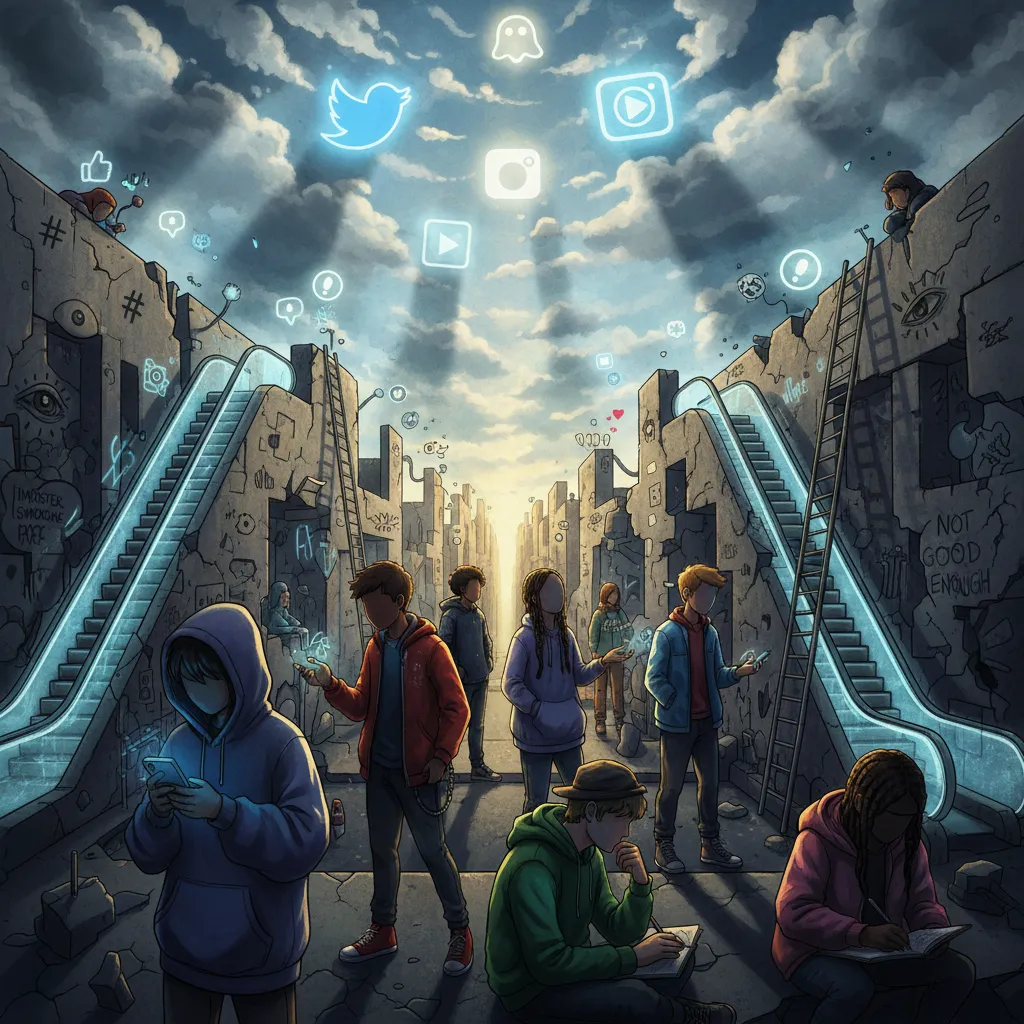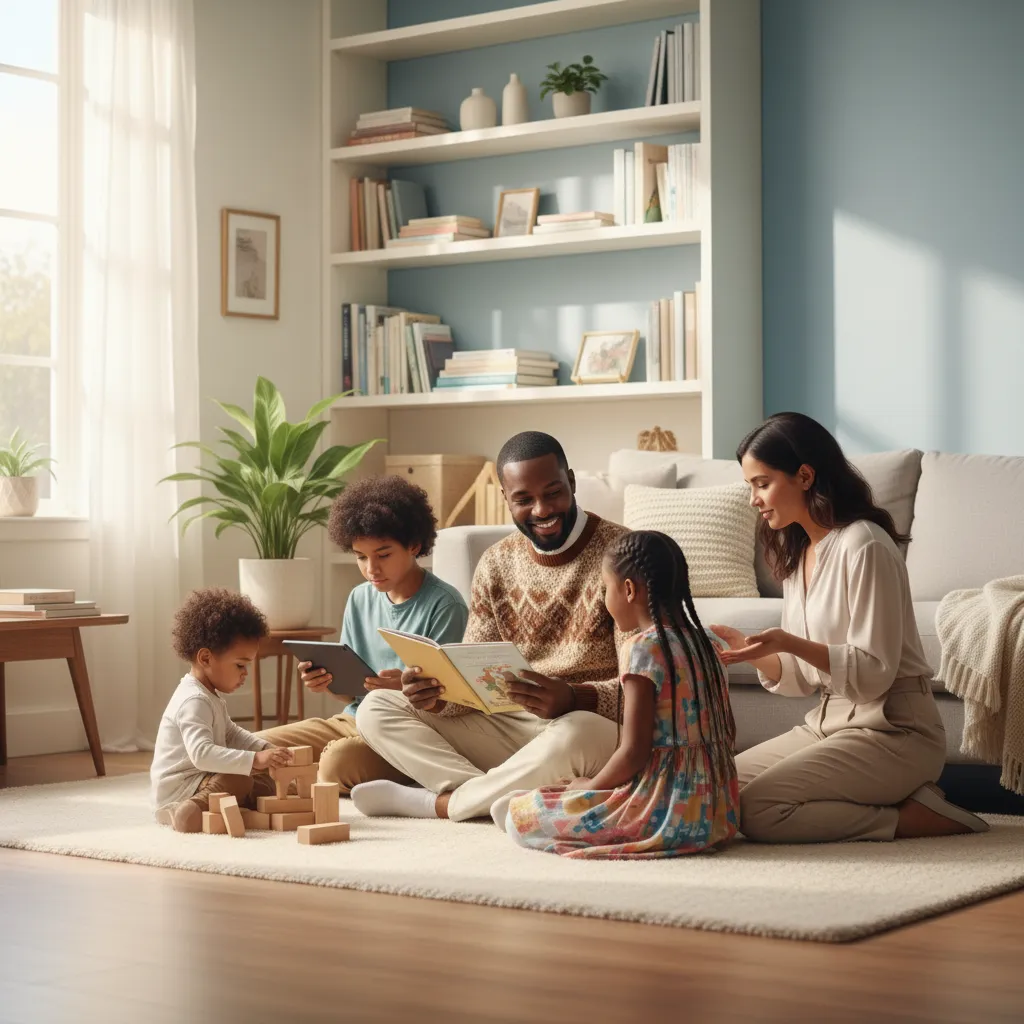I still remember the day my neighbor’s son, ordinarily a bubbly 12-year-old, suddenly refused to attend a friend’s birthday because the guest list was ‘too small’ for an epic Instagram story. Have you noticed how the digital world sometimes tugs at our kids in mischievous, invisible ways? Let’s get honest about what’s happening inside their heads—beyond what any standard ‘screen time’ lecture covers. You’re in for a mix of harsh truths, personal stories, and surprisingly practical ideas drawn from experience as much as research.
1. The Magic—and Mayhem—of Dopamine: Why Likes Feel Like Candy
Have you ever wondered why your child can’t seem to put down their phone, or why they light up every time a new notification pops up? The answer lies deep inside the brain, in a tiny chemical called dopamine. When it comes to child development and social media, understanding dopamine’s role is key to understanding why social media feels so irresistible—and why it can be so risky for kids’ mental health.
How Social Media Triggers Dopamine Release
Every time your child gets a like, comment, or heart on their post, their brain rewards them with a small burst of dopamine. This is the same “pleasure chemical” released when someone eats candy, wins a prize, or levels up in a video game. That’s why the dopamine release from social media feels so good—it’s the brain’s way of saying, “You did something right!”
Social media platforms are designed to keep kids coming back for more. The endless scroll, the notifications, and the chance to be part of a group or trend all feed into this cycle. As one expert puts it:
“The pleasure sensor in the brain has decided it depends upon those digital hits to feel like life is good.”
It’s not just about seeing what friends are up to. It’s about feeling like you belong, that you’re accepted, and that you matter. This is especially powerful for kids and teens, who are still figuring out where they fit in the world.
Chasing Micro-Rewards: The Candy Crush Effect
Think about how kids play video games. Each new level, badge, or high score gives them a little thrill—a quick reward that keeps them playing. Social media works the same way. Each like or comment is a tiny “win,” and kids start to chase these micro-rewards, just like they might chase candy or video game points.
- Likes and hearts = instant pleasure
- Comments and shares = social approval
- Notifications = anticipation and excitement
It’s easy to see how this can become a habit. A friend’s daughter once told me she checks TikTok “just to see if I got a heart, because it gives me a little buzz.” That “buzz” is dopamine at work, and it’s what makes social media addiction such a real concern for parents and educators.
The Addictive Loop: When Likes Turn Sour
At first, these dopamine hits feel harmless—just a fun part of being online. But over time, kids can become dependent on them. The brain starts to crave those digital rewards, and when they don’t come, it can lead to disappointment, frustration, and even sadness.
This addictive loop looks like this:
- Post something online
- Wait for likes, hearts, or comments
- Feel a rush of pleasure when notifications arrive (dopamine release)
- Crave more feedback, so post again
- Feel let down if feedback is less than expected
Over time, this cycle can have a serious mental health impact. Kids may start to tie their self-worth to the number of likes they get. If a post doesn’t do well, they might feel rejected or left out. This is where the Fear of Missing Out (FOMO) comes in—kids worry they’re not as popular or accepted as their peers, leading to anxiety and low self-esteem.
Why This Matters for Child Development
During childhood and adolescence, the brain is still developing. Kids are learning how to manage emotions, build relationships, and understand who they are. When social media becomes a main source of validation, it can disrupt this natural process. Research shows that social media use among children and adolescents is linked to increased depressive symptoms and anxiety. The constant chase for approval can leave kids feeling empty, moody, or even hopeless when the digital applause fades.
In short, the magic of dopamine makes social media feel like candy—but the mayhem comes when kids can’t stop reaching for more, and their mental health pays the price.

2. Comparison Traps and FOMO: Navigating the Teenage Mind Maze
Social media has become a powerful mirror for today’s youth, reflecting not only their lives but also the lives of everyone around them. With every scroll, you are shown friend counts, vacation photos, and the number of likes on a post. These numbers and images carve out clear lines between the ‘haves’ and ‘have-nots,’ making it easy to fall into the trap of comparing yourself to others.
‘Right now we have this negative lens that immediately turns on—we start seeing the haves and have-nots.’
How Social Media Fuels FOMO and Self-Doubt
FOMO—Fear of Missing Out—is more than just a buzzword. It’s a real feeling that can gnaw at your self-esteem, especially when you see the carefully edited highlight reels of your friends’ lives. You might notice someone posting about a fun party, a cool vacation, or a big group of friends. Instantly, you start to wonder: “Why wasn’t I invited? Why isn’t my life like that?” This is the heart of FOMO mental health struggles.
The impact is even stronger among teens. For example, a group of 11- to 18-year-old girls at a local youth organization shared how invisible they sometimes feel if they don’t have Snapchat or Instagram. One girl admitted, “If I’m not in the group chat or tagged in a story, it’s like I don’t exist.” This sense of invisibility can make you question your worth and belonging.
Peer Comparison: The Hidden Cost of the Social Spiral
Social media doesn’t just show you what others are doing—it invites you to measure yourself against them. You might look at someone’s follower count and think, “They have more friends than I do.” Or you might see a post with hundreds of likes and feel like your own experiences aren’t as valuable. This constant comparison can turn into an “external meter” that tells you how valuable you are, based on numbers that don’t truly reflect your worth.
- Friend counts and likes become a scoreboard for self-worth
- Feeling “stuck” at a certain number can cause anxiety or sadness
- Even with hundreds or thousands of friends, not getting more can feel like failure
The craving for more likes or followers isn’t just about popularity—it’s about the pleasure sensors in your brain. Every notification gives a small “dopamine drip,” making you feel good for a moment. But when the likes slow down or stop, it can leave you feeling empty or anxious. This cycle can make you vulnerable to negative thoughts and emotions.
The Real Consequences: Anxiety, Depression, and More
The anxiety depression youth face today is often linked to these comparison traps. Research shows that excessive social media use is connected to a 35% increase in depressive symptoms among teens. When you constantly compare yourself to others online, it’s easy to feel like you’re not good enough or that you don’t belong. Over time, these feelings can turn into deeper struggles with anxiety or depression.
Cyberbullying only makes things worse. Kids who are bullied online are more than twice as likely to experience suicidal thoughts or turn to substance use, especially between ages 11 and 12. Social exclusion—like being left out of group chats or not getting tagged in photos—can hurt just as much as direct bullying. Both can damage your self-image and mental health.
Real-Life Example: When Social Media Hurts More Than It Helps
In a church youth group, the president of a young women’s organization noticed a troubling trend. Many girls, ages 11 to 18, were struggling with anxiety, depression, and even suicidal thoughts. They talked about feeling disconnected, having trouble bonding with others, and questioning their own identity—all linked to what they saw (or didn’t see) on social media.
- Cyberbullying consequences: Higher risk of suicidal thoughts and substance abuse
- Social media and self-worth: External validation replaces inner confidence
- FOMO mental health: Fear of missing out leads to sadness, anxiety, and isolation
When you’re caught in the comparison trap, it’s easy to believe the lies that social media tells you about your worth. But these feelings are common—and they can happen to anyone, no matter how many friends or followers you have.

3. From Pressure to Prevention: Real-World Parenting That Works
If you’ve ever wondered how to help your child navigate the social media maze, you’re not alone. The pressure to let kids join the latest app is real, but prevention—rooted in practical parenting strategies—makes all the difference. The truth is, most kids need to stay away from social media until they’re ready. But what does “ready” really mean? It’s not just about age; it’s about self-government skills and emotional maturity. Enforcing boundaries—like waiting until teens can self-govern before introducing social apps—helps protect their well-being and sets them up for lifelong digital resilience.
Think of social media like a hungry stray dog: either you train it, or it runs wild through your house. If you treat digital platforms as toys, they’ll take over your child’s attention, mood, and even their sense of self. But if you teach your kids to see social media as a tool—something to use with purpose and caution—you empower them to manage social media use instead of being managed by it.
So, what does real-world prevention look like? It starts with setting clear family standards. In the TSG (Teaching Self-Government) parenting approach, families create a “family standard”—a set of rules that guide how digital devices and online activities are handled. Before any child gets access to social media, they must demonstrate four key self-government skills: following instructions, accepting “no” answers and criticism, accepting consequences, and disagreeing appropriately. These self-government skills for kids are the foundation for safe, responsible online behavior.
Why is this so important? Because even adults struggle to control their social media use. If you’ve ever lost track of time scrolling through Instagram or YouTube, you know how easy it is to get sucked in. Kids are even more vulnerable. That’s why family rules—like screen-free times and skill prerequisites—are proven to boost kids’ digital safety and emotional health. When you require your child to show self-governance before getting a device or social account, you’re not just delaying access; you’re teaching them to set boundaries, manage impulses, and handle disappointment—skills that matter far beyond the screen.
But boundaries alone aren’t enough. The best substitute for online attachment is real-life bonding and honest conversations—even when it’s awkward. When you remove a digital attachment, you must replace it with something better. As one expert puts it,
“The best thing to replace that attachment with is you… Real bonds combat the pitfalls of social media.”Spend time together, talk openly about what’s happening online, and share your own experiences with digital temptations. These moments of connection are the “secret sauce” that helps kids realize life is richer outside the social spiral.
Another essential parenting strategy is to talk openly about how social media manipulates users. Teach your kids about algorithms, teasers, and the endless scroll designed to keep them hooked. Explain that social media companies profit from their attention and emotions. When kids understand the psychology behind these platforms, they’re less likely to fall for every trick and more likely to use social media on their own terms.
Building genuine relationships at home is the strongest defense against the empty chase for likes and followers. When kids feel seen, heard, and valued offline, they’re less likely to seek validation online. Replace screen time with bonding activities—family meals, outdoor adventures, creative projects, or simply talking about their day. These experiences build confidence and resilience, making it easier for kids to resist the pull of digital drama.
In the end, managing social media use is about more than rules—it’s about teaching self-government, modeling healthy habits, and nurturing real connections. Social media isn’t going away, but with the right parenting strategies, you can help your child outsmart the social spiral. By focusing on prevention, building genuine relationships, and equipping your kids with self-government skills, you’ll give them the tools they need to thrive—in the digital world and beyond.
TL;DR: Kids don’t need more likes—they need you, boundaries, and a genuine connection. If you remember one thing: real bonds combat the pitfalls of social media.



